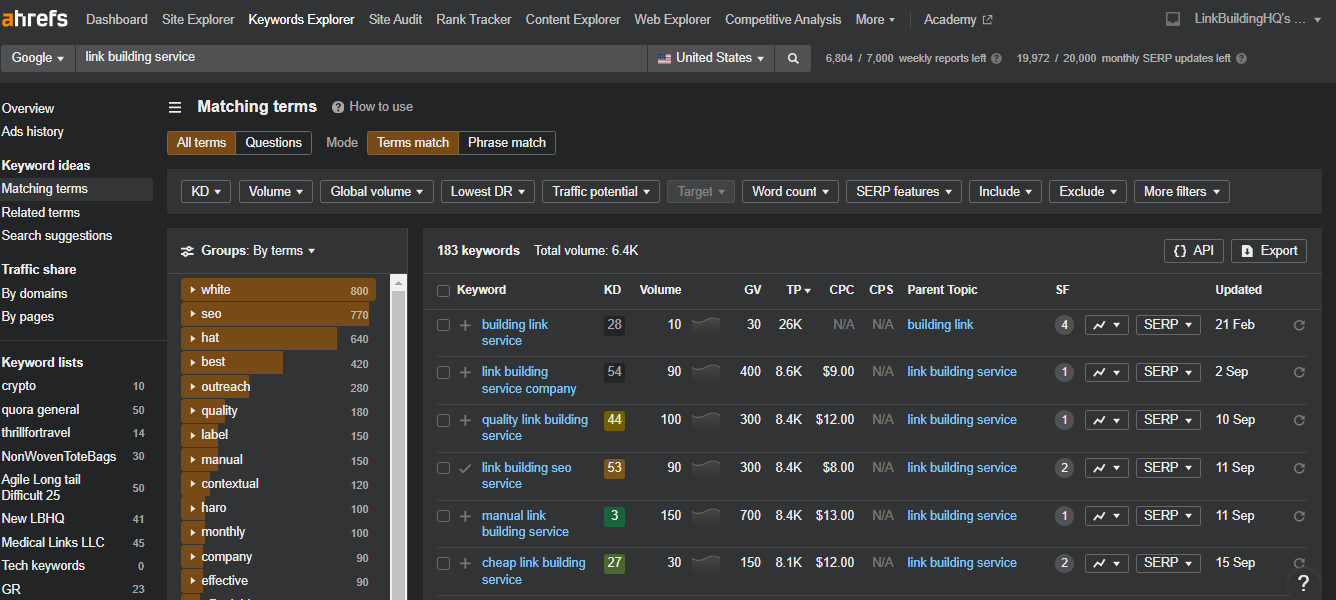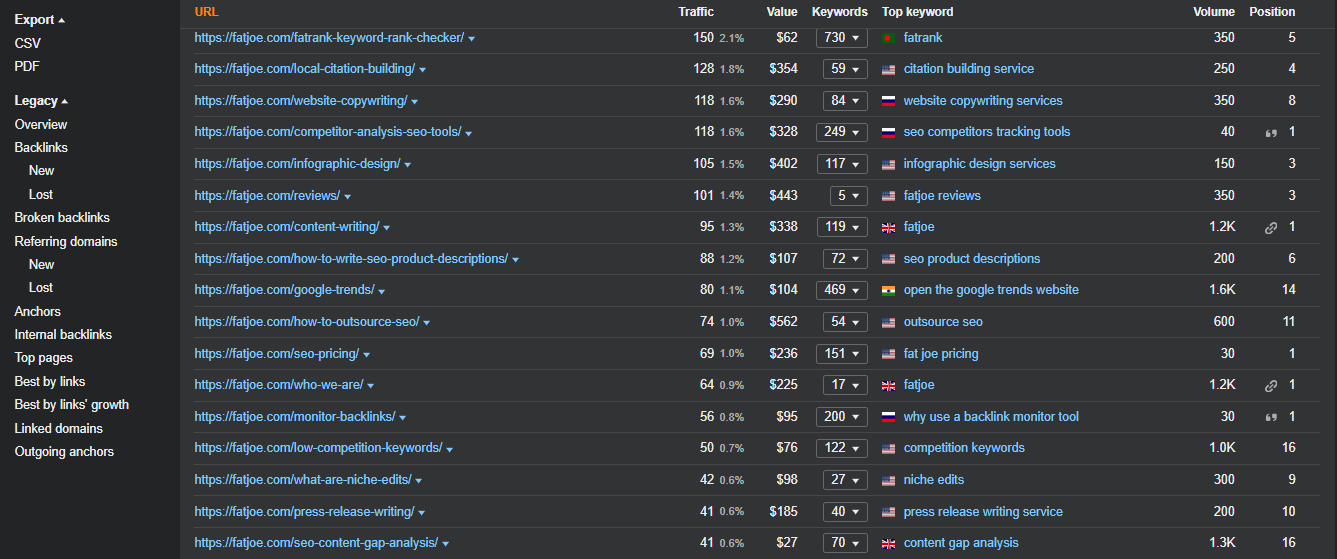- Content Marketing
Rank Higher, Convert Better: Your 2023 SEO Content Strategy Unveiled

The digital landscape has become fiercely competitive, even more so in 2023. Amid the ever-evolving nature of search algorithms, user behavior, and trends, it’s not easy to get on top SERP spots.
Remember, Google is constantly seeking helpful, premium quality, and relevant information to display for searches. Therefore, it’s high time that you initiate crafting absolutely helpful and outstanding content that matches the user intent. And to make that happen, you’ll need a robust SEO Content Strategy.
In this blog, we’ll discuss how you can leverage the power combo of SEO and content strategy and maximize your traction. But before anything, let’s take some time to understand what exactly SEO Content Strategy is.
What is SEO Content Strategy
Simply put, SEO content strategy is the process of ideating, planning, crafting, and optimizing content so it occupies a higher rank on SERPs and can receive more traction.
It supports your business goals, elevates the brand image, draws in coveted attention, and adds up to the targetted growth. It’s literally a must-have if you really want to grow your business. Website owners and digital marketers meticulously plan and craft SEO content strategies to meet new targets every year.
Typically, SEO content strategies initiate from brainstorming and end with analyzing the performance of the content. It must be noted that creating a content strategy for SEO encompasses all forms of content, including blog posts, listicle articles, landing pages, product/service pages, case studies, long-form content, videos, and everything in between.

Here are some eminent factors that you need to understand when it comes to creating an impeccable SEO Content Strategy. Without further adieu, let’s begin!
– Get to know your audience
Your audience isn’t only some number you see on the analytics tool. They’re real and live in the world you live in. So, first of all things, you’ll truly need to know your audience. Like putting in a serious effort to identify different audience segments, and understand their preferences, needs, pain points, and the particular type of solution they’re looking for. In addition, it is also necessary to collect information about their age, education level, location, income level, interests/hobbies, and general demeanor. Garnering the necessary data will allow you to build an enticing buyer persona and lead your content creation efforts on the right path.
To begin the research of your target audience, you can use Google Analytics/GA4 or any other tool of your choice. Remember, the right data will not only help you craft the right content strategy but will also help you unravel the audience’s concerns and needs. This means you can address their issues better, motivate them at every stage of the buyer’s journey, and push them further down the sales funnel, which is the ultimate goal of the whole SEO content strategy.
– Brainstorm Content Ideas
When it comes to brainstorming ideas to create seo content plan, you should always prioritize what your audience wants to see or know. If you completely neglect this important element, it’ll cost you with your viewership getting affected or not receiving the desired attention. And in case you’re struggling to understand your audience’s perspectives, then don’t worry, there are so many ways to know. For instance,
- Look out for trending topics in places where your audience is chronically online and actively interacts.
- Analyze all the conversations and engagements happening on the respective socials, surely, you’ll get many ideas from there.
- To get more in-depth insights, you can also conduct a survey through different mediums to better understand what your audience wants to know or see.
- And most importantly, keep a close eye on the content your top competitors are churning out. Shortlist the content ideas and topics with the most number of engagements.
Speaking of shortlisting the topics, there’s another aspect you need to be vigilant of.
– Choose topics with search traffic potential
We know that the goal of SEO content is to rank high on SERPs, so you need to precisely pick the topics with high search traffic potential. Like topics that are receiving the majority of your target audience at the moment. That means you’ll have to pull out some numbers to get a better idea, and how are you going to do that? Ahrefs has got you covered with the simplest tricks.
- Open Ahrefs and go to the Keywords Explorer option.
- Type in your targeted keyword and hit the search button. Once you get the overview, click on the Matching Terms option on the sidebar. This will give you a list of all the matching keywords with the relevant data.
- Then click on the traffic potential option (TP) on the top of the report to filter out the list on the basis of highest to lowest incoming traffic.

So, doing this you can pick out all the keywords your target audience is searching for.
Another thing you can do is perform a little competitor research using Ahrefs or any other tool of your choice.
- Go to the Site Explorer option of Ahrefs.
- Type in the site of your competitors and the overview screen will open up.
- Then, open up the top pages report, this will show you all the top-performing pages of that site and their relevant data in terms of keywords and traffic.
- This will not only help you identify the topics that draw the most attention from the audience but also assist you in choosing the right keywords for your SEO content marketing strategy.

You can also analyze these top-performing pages for the three Cs to understand better what’s working and what’s not working.
Content Type — are these pages landing pages, product/service pages, case studies, articles, blog posts, or some other type of content?
Format — are they listicles, how-to content pieces, step-by-step guides, tools reviews, or something else?
Angle — is there a particular aspect being highlighted in the piece, like a special selling point, new features, options, etc?
Craft Content Calendar
Okay, once you have finalized the list of topics you want to roll out content on, it’s time to craft your content calendar. Because, to set your content goals, schedule the relevant tasks, develop a streamlined workflow, and keep track of the progress, you need nothing but a Content Calendar.
And yeah, don’t forget to ask some important questions before you proceed to create your calendar, like:
- What is the realistic number of content pieces your team can create in a given month?
- How long will it take to create a content piece? Draft your deadlines according to that.
- Decide on which channels a particular piece needs to be promoted. If there’s an amount of allocated budget for it, mention that too, please.
Asking these questions will help you define your content goals in a better way, construct a schedule, and remain consistent with your strategy. You can create a calendar on Google sheets or use other tools available, whichever suits your requirements and budget.
Create a brief for every topic
A blog template or a simple brief comes in handy in order to make your workflow smooth, effective, and faster. It helps you to decide everything that needs to go into a particular content piece, just like proper parameters that need to be followed. The basic brief contains all the necessary elements including topic name, category, premise, main points, keywords to target, word count, targetted stage of the buyer’s journey, and referred resources. Another thing to note is that this template or brief works wonders in assisting your hired freelancers or team of writers and saving your time and effort in so many ways.
Create something better or different
As suggested by Brain Dean, when it comes to creating content, you can create something better or something different. It depends on what will work to get the attention of your audience and search algorithms. For instance, after seeing all the results ranking on the first page of SERPs, if it feels like you can enhance the value of the overall topic by creating something better, like updating the existing information or making it easier to apprehend, then go ahead! And in case, you feel like there is a need to create a step-by-step guide on some topic, and nobody has rolled out such content so far, then it’s a good idea to go for that. So, it varies, depending on the situation you come across.
In addition, no matter the type of content piece you’re creating, make it stand out from the rest. Go above and beyond your limits to perform extensive research, garner the necessary data, add visuals where needed, include experts’ opinions, and make it nice, interesting, and easy to read. Relate to your audience and give them exactly what they’re looking for. This way, your piece will get the coveted attention and conversions too.
Track performance
This is the part that allows you to see if all your efforts led to fruition or went in vain. So, prioritize to track performance, your job isn’t done when content is published. Vigilantly analyze the performance of every content piece you roll out, and check out if it has managed to meet your SEO goals or not. By doing this, you’ll also get to know in what areas your content piece is falling short and what exactly you can do to make it better. Therefore, it’s best practice to monitor and compare the annual or quarterly performance of all the campaigns and take measures to get closer to the defined targets that you have set.
Your SEO Content Strategy is the cornerstone of your brand’s success. We hope the information present in this blog will help you create an exceptional strategy that skyrocket your brand’s growth this year. Good luck!
Kickstart your first project
- Easy Order Process
- Vetted team of writers
- 100% original content


